With an 8-0 win, RB Leipzig demolished Mainz on the tenth Bundesliga match-day. Therewith, Leipzig confirmed their current top shape, especially attacking-wise, after a 6-1 win over Wolfsburg in the DFB-Pokal.
The following tactical analysis deals with Leipzig’s successful attacking tactics. Moreover, our analysis examines why Mainz’s defensive approach failed.
Lineups and formations
Julian Nagelsmann set his team up in a 4-4-2 formation. However, as their wingers played quite narrow, often attacking through the half-spaces, Leipzig’s shape resembled of a 4-2-2-2 at times.
Since centre-back Willi Orban missed due to an injury, usual full-back Lukas Klostermann replaced the Leipzig captain as a central defender next to Dayot Upamecano. In the attacking department, Christopher Nkunku and Marcel Sabitzer often tucked inside while the full-backs pushed high. Last but not least, attacker Yussuf Poulsen mostly provided depth while his striking partner Timo Werner also dropped to receive between the lines or on the wing.
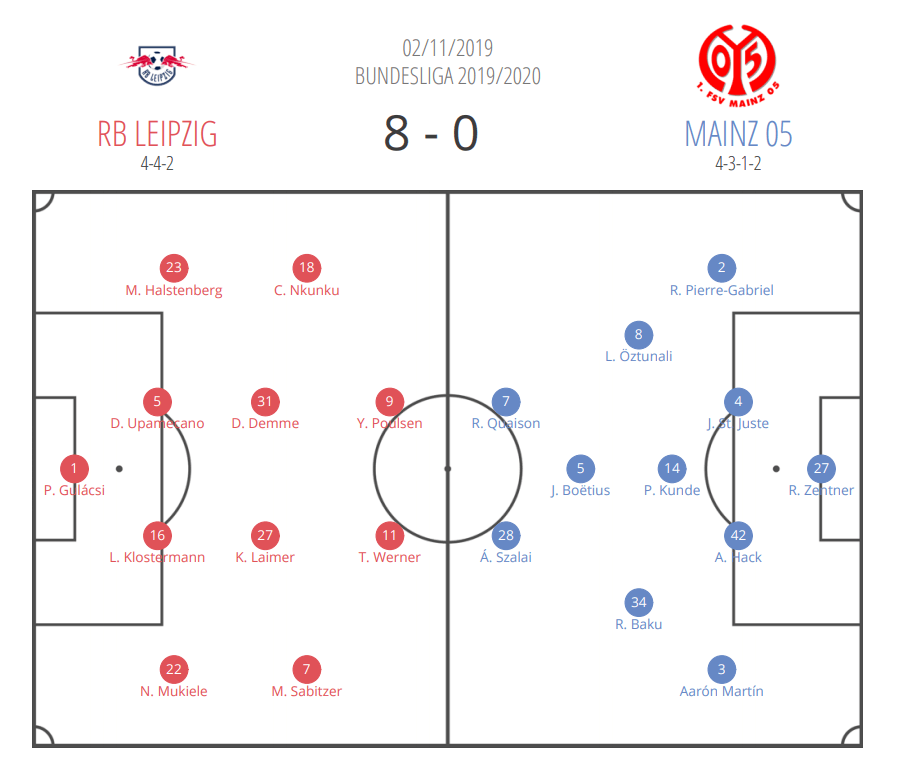
Sandro Schwarz lined his side up in a centrally focused 4-3-1-2. Due to the ban of central defender, Moussa Niakhaté, Alexander Hack played in the central defence. While the full-backs supported the attack in wide areas, advanced midfielders Ridle Baku and Levin Öztunali were tasked to support the attackers in more central areas. Pierre Kunde took over the role of the single pivot in front of the backline.
Mainz’s lack of defensive cover and Leipzig’s threatening counter-attacks
Under Sandro Schwarz, Mainz attack in high numbers. Since their 4-3-1-2 system included many centrally positioned players, the full-backs were supposed to support the attack and provide width. But that often only leaves three defenders in the back to cover the attack.
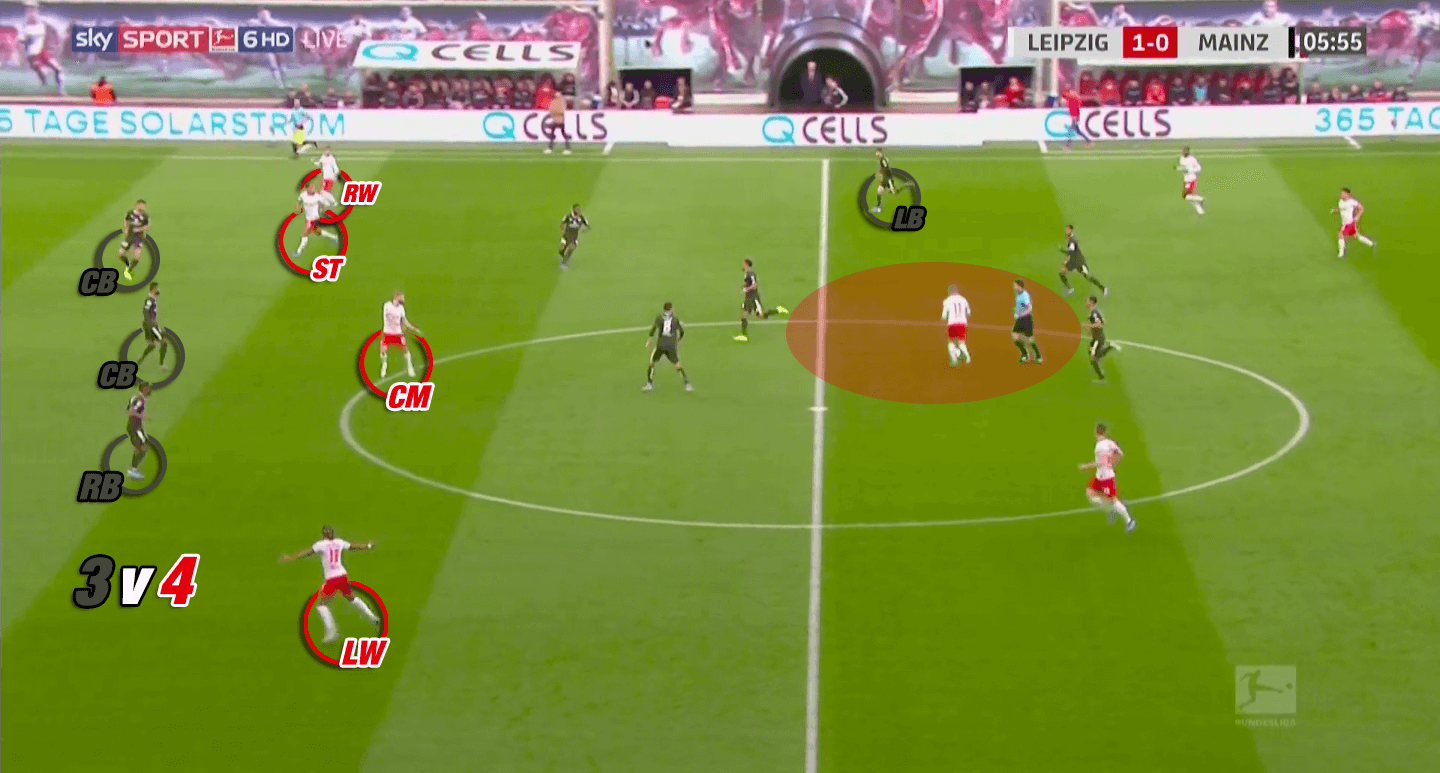
That is not a problem in general but requires good positioning from the midfielders in order to quickly support their defenders after losing the ball. Instead, Mainz’s midfielders often neither defended the ball-carrier nor tracked back Leipzig’s attackers as in the situation above. This passive way of defending allowed Leipzig to create several promising opportunities in transition moments.
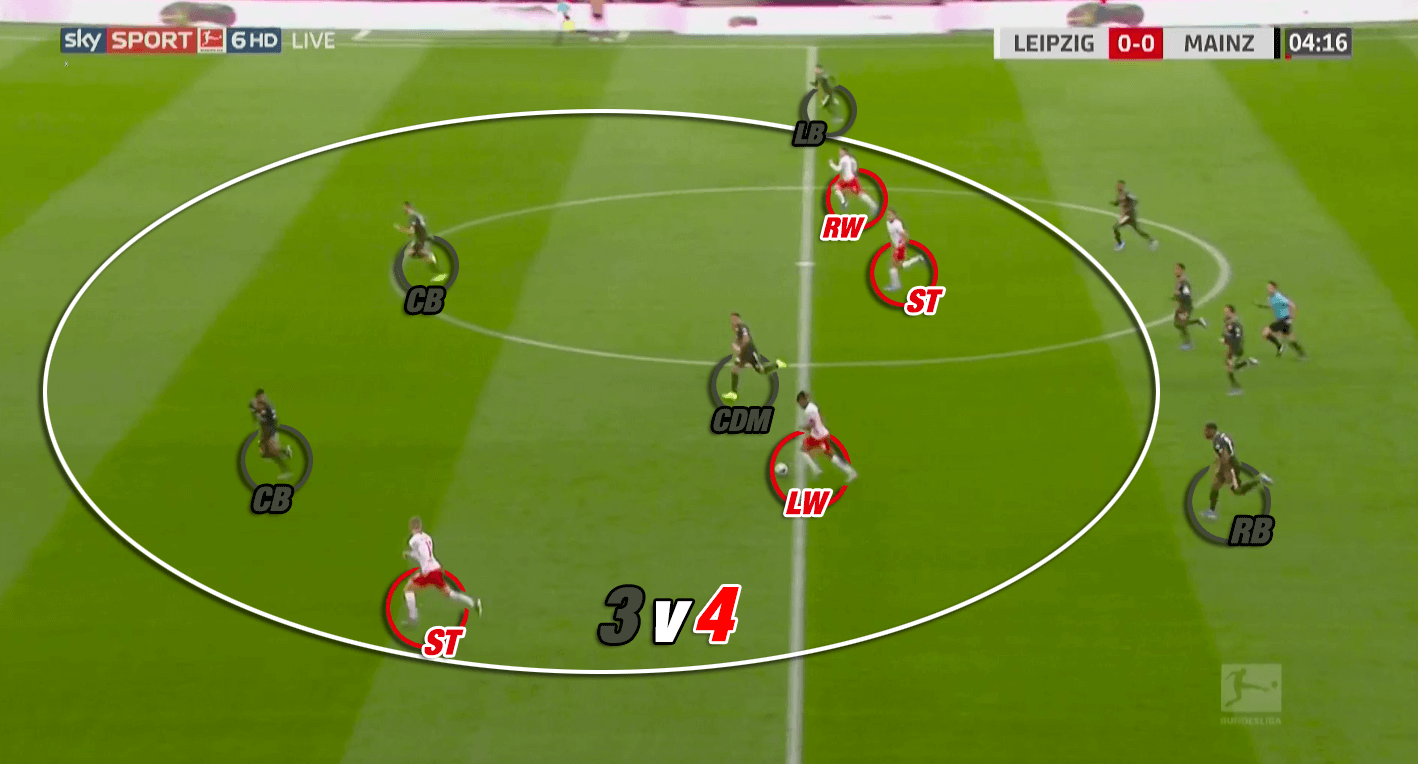
Since Leipzig often quickly created a numerical superiority against Mainz’s lone pivot, the ball-carrier had several options and was not pressured. Due to the pace of Leipzig’s attackers, they could then support the attack and even outnumber Mainz’s defenders.
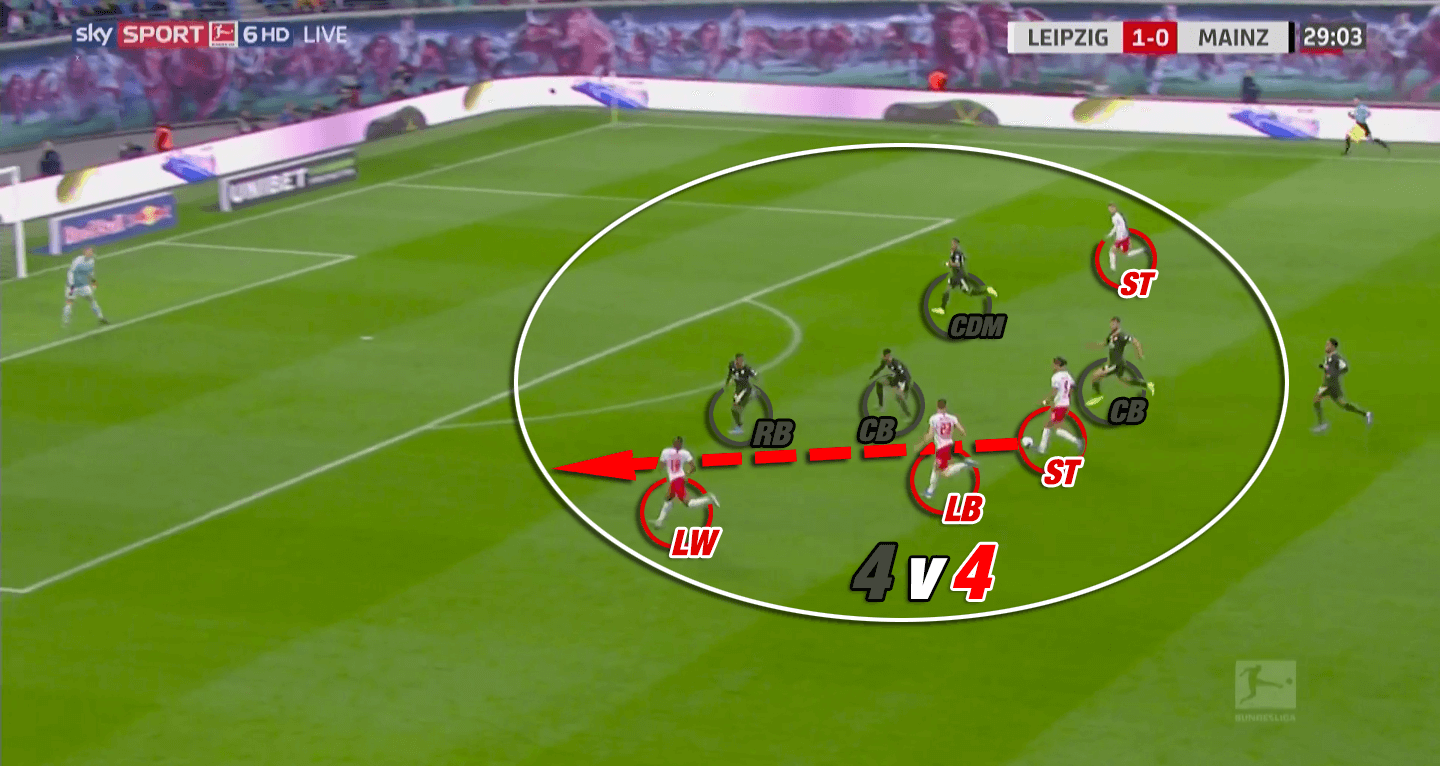
It was often Mainz left-back Aarón Martín who was high up the pitch when Mainz lost the ball. In these scenarios, right-back Ronaël Pierre-Gabriel stayed in the back. As a consequence, Leipzig left-back Halstenberg was unoccupied and free to quickly move up the pitch in transition phases. That was one way how Leipzig created an overload on their left attacking side. Therefore, it is not a coincidence that Leipzig created an amount of 1.34 xG through counter-attacks on the left side as shown below.
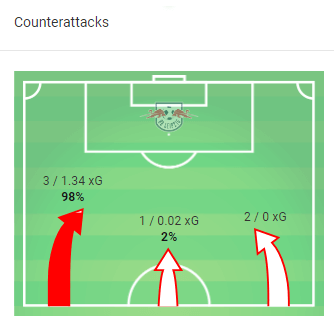
Leipzig’s dynamic half-space attacks
With their 4-3-1-2 formation, Mainz were capable of shutting down central passing options whenever Leipzig were building up. That way, Schwarz’s side guided Leipzig’s build-up towards their open full-backs. Being forced to play out wide first, did not seem to diminish Leipzig’s attacking power though. Nagelsmann’s side played towards the wing and back into a more central area from there.
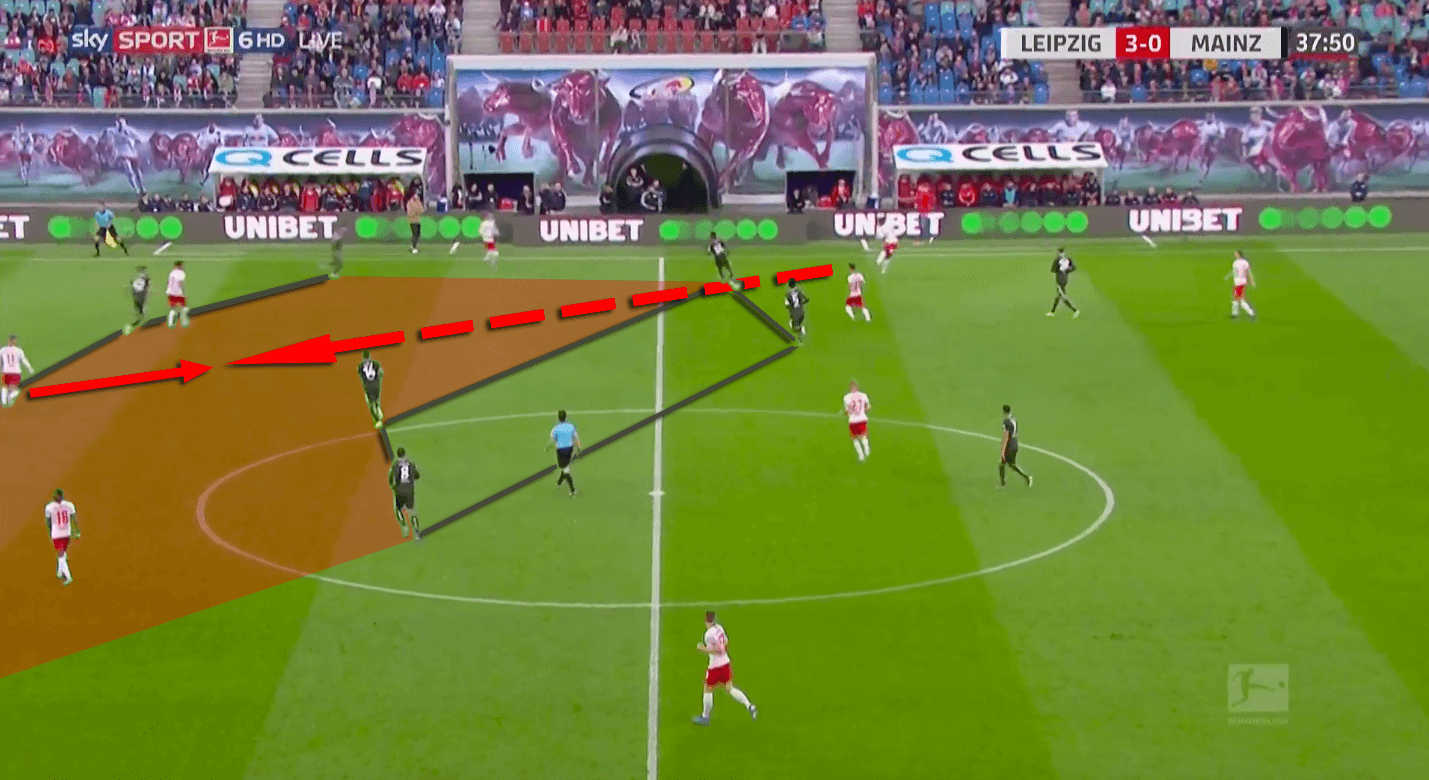
Their right-back Nordi Mukiele could often play the ball into the ball near half-space. That way, Leipzig initiated their fourth goal of the day as displayed above.
In general, Leipzig always tried to occupy the central area between the lines. As Mainz’s single pivot Pierre Kunde defended the central part of this area, Leipzig were offered more space within the half-spaces. As a consequence, several of their attacks resulted from combinations through the half-spaces. Often Mainz’s advanced midfielders were positioned slightly higher as their single pivot which created space behind them.
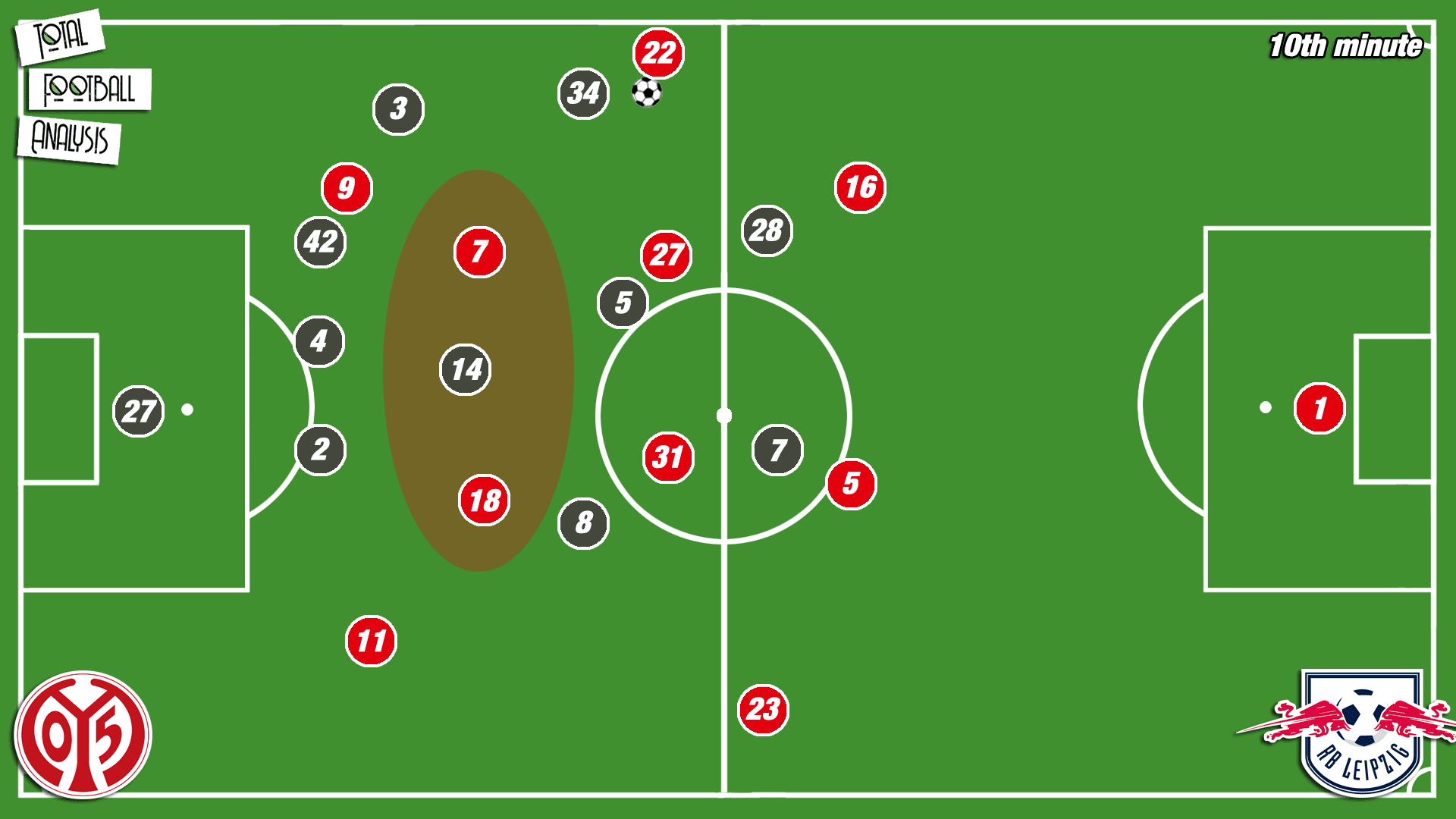
Nagelsmann’s team aimed at occupying the space between the lines in a dynamic way. Therefore, striker Timo Werner often acted in wide areas allowing either advanced midfielder Nkunku or left-back Marcel Halstenberg to move into space between the opposition midfield and defence. These rotational movements made it difficult for Schwarz’s side to defend as the agile Leipzig players often moved into new positions on the pitch and therewith the responsibility for direct opponents constantly changed.
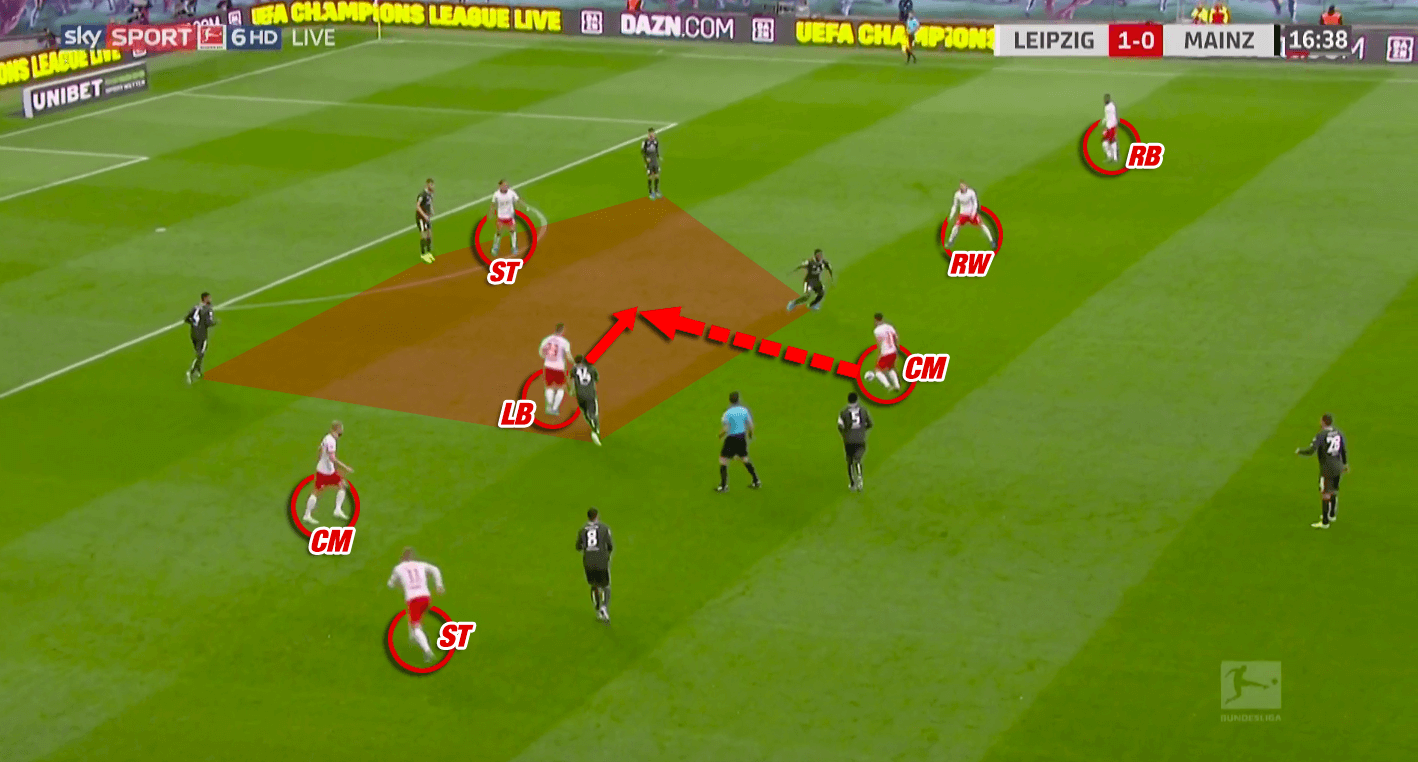
One of Leipzig’s individual attacking principles was that their attackers positioned themselves on different lines. That complicated defending for Mainz as they would need to move out of their position to follow their direct opponent.
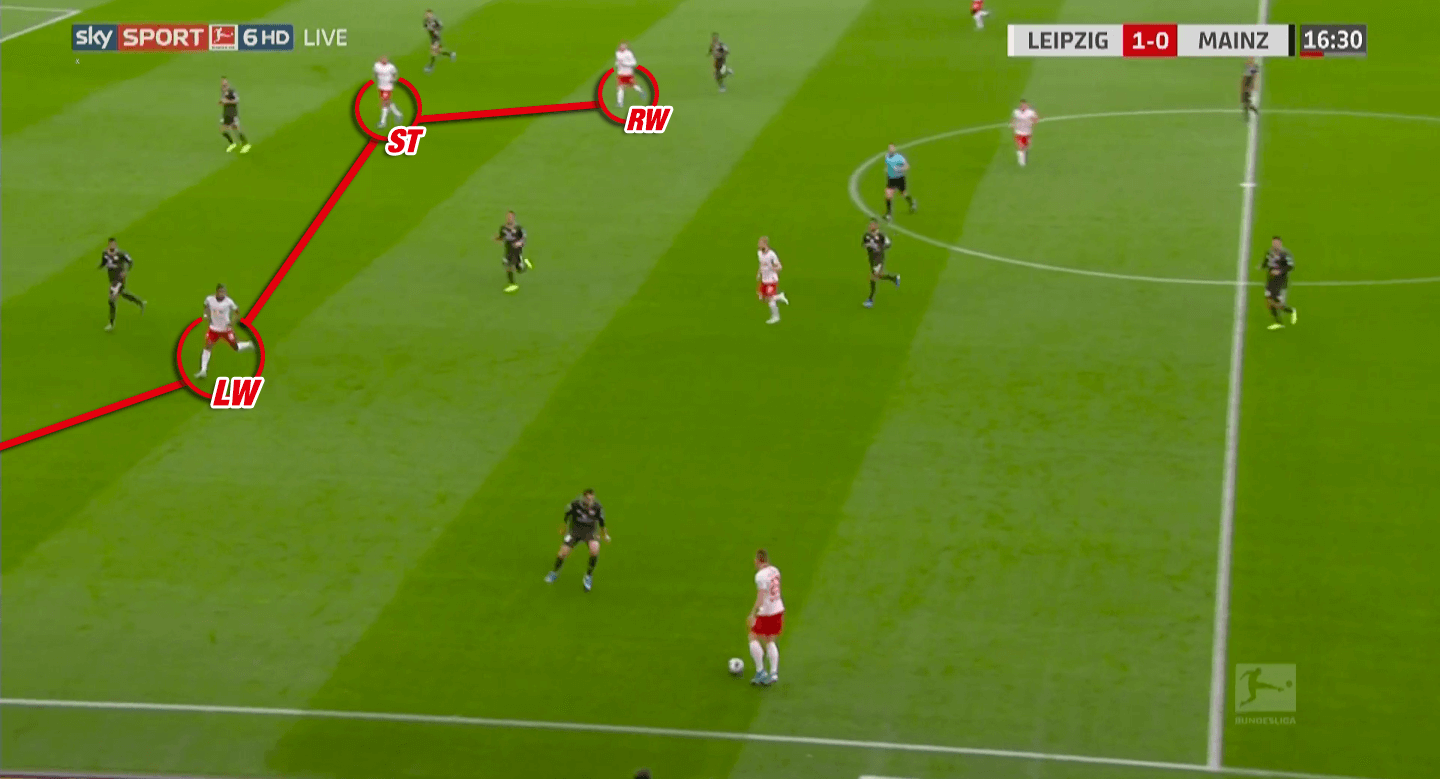
With this positioning, Nagelsmann’s side also facilitated Up-Back-Through combinations to get into an open body shape in Zone 14 (the central are in front of the opposition box).
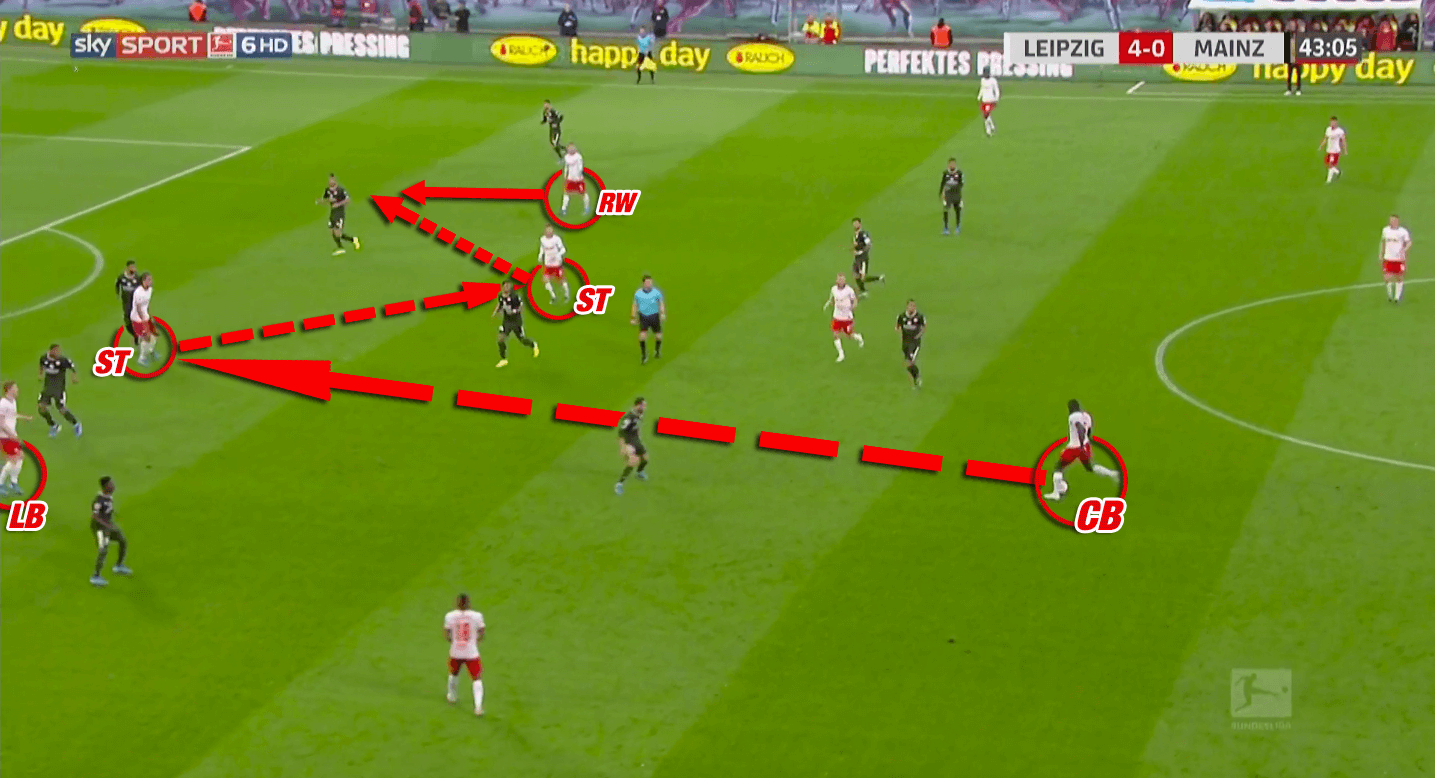
Since Mainz played with a back four, their central defenders were often forced to stay in their positions in order to ensure a numerical superiority within the backline. A back five might have changed this issue at least as a centre-back could have moved out to press Leipzig’s players between the lines.
Mainz’s change to a back five
In the 39th minute, Mainz coach Schwarz changed the formation of his side to a 5-4-1. Central midfielder Danny Latza came into the game for attacker Ádám Szalai. That only left Robin Quaison upfront, while midfielder Baku moved back into the right wing-back position to turn the back four into a back five.
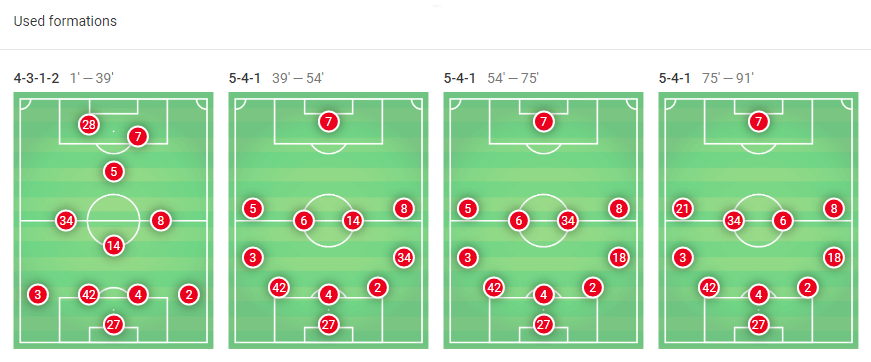
Mainz’s new back five system only led to a change in their defensive phase.
In the defensive transition, however, Mainz still showed the same issues as in the first half. As their wing-backs moved up the line when attacking, Mainz still possessed a line of three in the back during Leipzig’s dangerous counter-attacks.
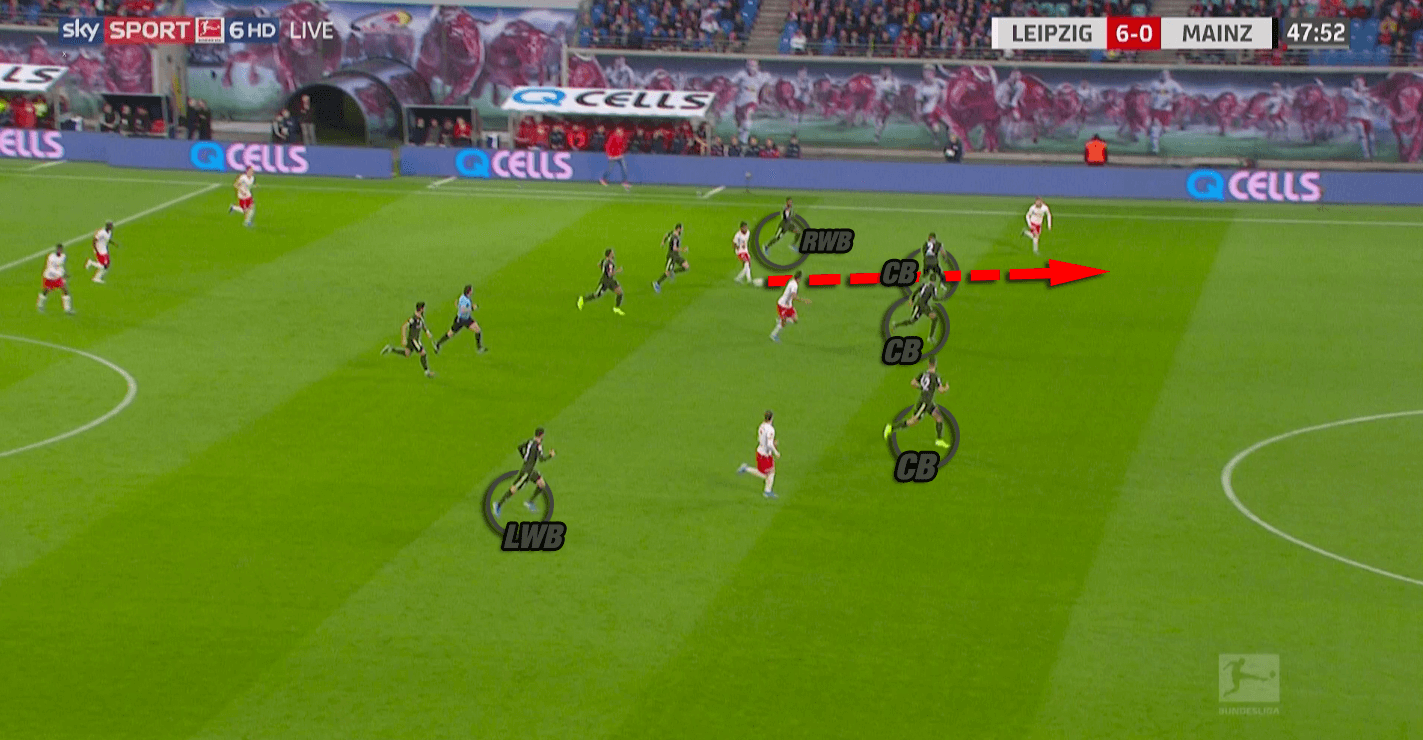
And even if the wing-backs stayed in the back, they failed to stay close to their direct opponents as when Leipzig scored the seventh goal (image below).
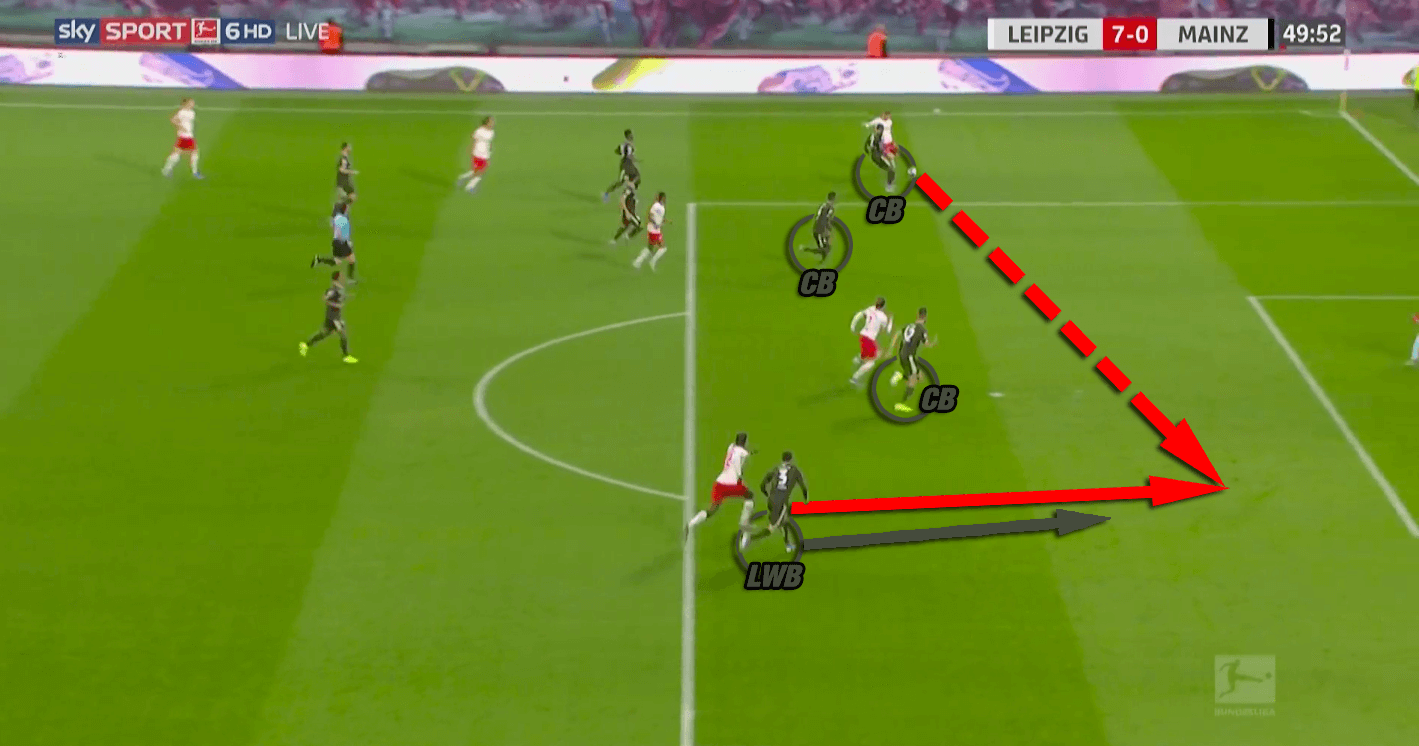
After the 50th minute, Mainz only allowed 4 shots which is way less compared to the 14 shots within the first 55 minutes. However, whether that was down to Mainz’s changed tactics or rather caused by a decrease in the purposefulness of Leipzig’s attacks is difficult to tell. The fact is that Mainz already lost the game within the first half and even an outstanding performance in the second half would not have risked Leipzig’s win in any way.
Conclusion
All in all, Leipzig clearly dominated the game and demolished Mainz with their fast counter-attacks and attacks through the half-spaces.
The hammering was caused by a lack of adaptability of Mainz under Schwarz. They attempted to continue to play with their 4-3-1-2 formation with committing many players forward during the attacking phase. As Leipzig are known for their strength in counter-attacking, more defensive cover would have been sensible. Nevertheless, Leipzig also perfectly penalised this.

If you love tactical analysis, then you’ll love the digital magazines from totalfootballanalysis.com – a guaranteed 100+ pages of pure tactical analysis covering topics from the Premier League, Serie A, La Liga, Bundesliga and many, many more. Buy your copy of the October issue for just ₤4.99 here





Comments